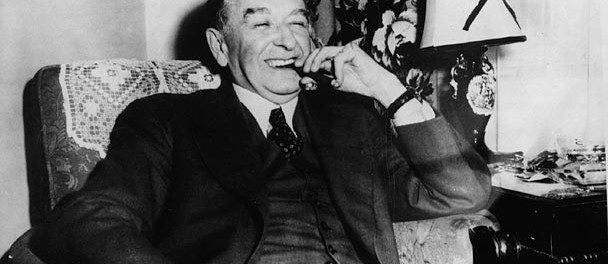When the Supreme Court fined the Premier & other Quebec curios
Maurice Duplessis, tyrant or liberator? The Quebec premier for 15 years, Duplessis is known as the Premier that was friendly with the Catholic Church and oppressive to trade unions, but also the man who was the staunch defender of provincial rights, the one who brought in electrification of the rural areas, and the Quebec flag that flies over our institutions today. Whatever one’s opinion of the statesman might be, the Duplessis era was one of the most interesting times for Quebec History, with the curious Padlock Law and the curiouser case of one Mr. Roncarelli.
The Duplessis government passed the Padlock Law (“An Act to Protect the Province Against Communistic Propaganda”) in 1937. This piece of legislation censored the publication and distribution of Communist and Bolshevik propagandist writings, as well as forbade the use of a building to create and distribute this propaganda. With this law came the right of the Attorney General to place a padlock on the establishment that aided in the creation of propaganda and even gave the Attorney General the power to go as far as to destroying the pamphlets or other printed materials that were thought to aid the Communist or Bolshevik cause. How could this law be struck down? By a rent squabble, of course. In the famous Switzman v. Elbling ruling, Frieda Elbling wanted to cancel a lease that was created for John Switzman, a prominent Marxist, on the grounds that he was using the apartment for propagating Communism. Switzman, claiming that the Padlock Law was a violation of his freedom of speech, won his case in the Supreme Court. The Court struck down the Padlock Law, declaring it ultra vires (invalid). It was a simple act of invalidating a law: major, yes, but just a law. In 1959, Frank Roncarelli took it one step further and sued Duplessis himself.
Roncarelli, who was a successful businessman and an active Jehovah’s Witness, used the money he had made from his business to help bail out fellow Jehovah’s Witnesses who had been jailed by the police. Duplessis, still Premier, actively opposed this sector of Christianity and used his power to revoke Roncarelli’s liquor license, rendering his enterprise virtually useless and forcing Roncarelli to sell it within months of the revocation. Arguments ensued. Roncarelli sued Duplessis for damages, appealing all the way to the Supreme Court. The liquor license wasn’t revoked for a month: it was forever (or, in fancy words by Supreme Court Justice Judge Rand, “a declaration of a future, definitive disqualification”). In a six to three decision, the judges ruled in favour of Roncarelli, for various reasons: some thought that even if Duplessis had the power to revoke the licence, he had done so in bad faith since he hadn’t a legal reason to do so. Others thought Duplessis hadn’t the power and had stepped out of his boundaries as Premier.
So perhaps the Chief wasn’t above the law after all. In historical terms, however, he might just transcend it. Laws come and go; laws are created, modified, and revoked. Duplessis, faults and all, seems to stay the same, an almost caricature of a man who dominated Quebec politics for fifteen years. But he is also the pillar of stability for a navel-gazing society. This pillar, once broken, would shake society free from the social conservatism, allowing a people to lift their eyes and turn towards the world in a search to express a new identity.






